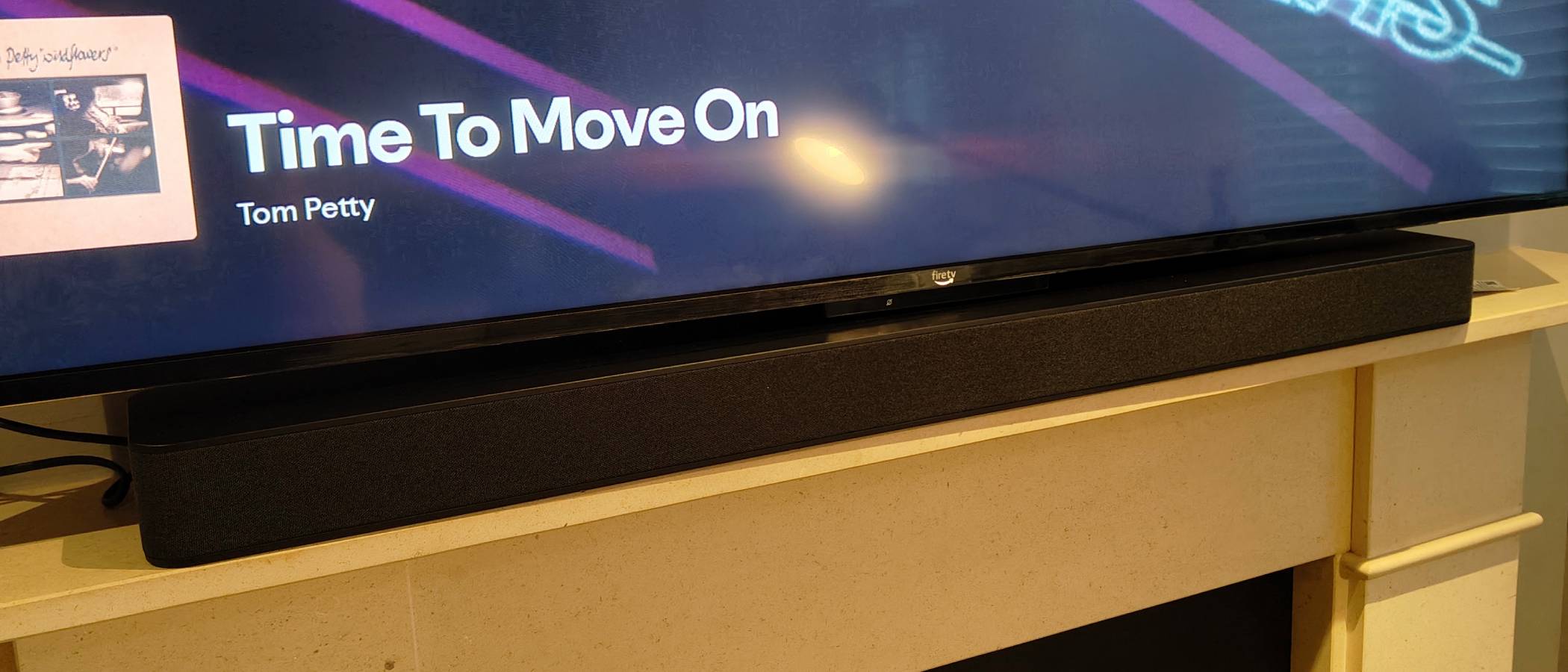What to Watch Verdict
The Amazon Fire TV Soundbar Plus offers improved audio chops over its sibling, though its higher price (and much larger body) than the other model may put lots of people off. A few handy features like a dialogue enhancement mode and advanced equalization features go a long way to distinguish this from its sibling.
Pros
- +
Useful dialogue feature
- +
Booming audio
Cons
- -
Price and size hikes
- -
No built-in Fire TV
Amazon Fire TV Soundbar Plus quick review
Amazon is getting serious about its audio offerings: the Amazon Fire TV Soundbar Plus shows us that its foray into soundbars wasn’t a one-and-done venture but a serious new push into home audio.
Ostensibly a sibling for 2023’s Amazon Fire TV Soundbar, the Soundbar Plus was announced alongside the company’s flashy new mini-OLED TVs – presumably the pairing was meant to indicate that these are the new top-tier range of Amazon home theater devices, and not that the TV sets lack any merit in the sound department. You’ll have to wait for our review of those sets to find out, though.
Tom Bedford is What to Watch's streaming writer, and so he uses various paid and free streaming services for his day-to-day job.
He has a history of reviewing tech gadgets for various websites including our sister sites TechRadar, Top Ten Reviews and Creative Bloq, and leads WTW's hardware coverage.
Soundbars are, for people who have somehow found this article without knowing what it’s about, external speakers you buy for your TV set. They offer improved sound over the set’s built-in speakers as well as a range of extra features like equalizers, preset modes and surround-sound, depending on the soundbar.
As you can guess from a device with the suffix ‘Plus’, the Amazon Fire TV Soundbar Plus offers a wider range of features. Buying it nets you Dolby Atmos and DTS:X for your movies and shows, as well as 3.1 audio (which can be bumped up to 5.1 if you buy a speaker bundle, but I didn’t test the soundbar with those).
As you can also guess from that prefix, the Amazon Fire TV Soundbar Plus isn’t cheap – in fact, its recommended retail price is twice that of its sibling, and I don’t think everybody will find that the audio improvements justify the price hike.
For audiophiles, sure, it may be a price tag that you can justify. But if you’re just buying the soundbar to better enjoy the latest new TV show streaming this week, I don’t think you need to shell out for the pricier model.
Another thing that’s seen an increase is the size of the bar, with the Fire TV Soundbar Plus taking up a considerable amount more real estate (and weighing more) that its predecessor. It only just fit on my shelf, and I can see its bulk being a problem for some people depending on the storage situation you had in mind.
The latest updates, reviews and unmissable series to watch and more!
The one thing that really won me over on the Soundbar Plus is an audio feature that enhances the volume of dialogue, making mumbly speech much easier to hear. Honestly, if you struggle to make out what people are saying in TV shows, this feature alone may be worth the higher bill!
Amazon’s product ecosystem works really well together, and that’s no different with the Fire TV Soundbar Plus as it was easy to use – it might be a touch fiddly to set up depending on your experience with this kind of product (and your existing TV) but you can pay extra for installation.
Some people are still irked that, unlike rival soundbars from Roku, Amazon doesn’t build its operating system into the Fire TV Soundbar Plus. So to use it you’ll need to have a TV or streaming stick running Fire TV. Take a look at our round-up of the best Fire TV stick for you.
Amazon Fire TV Soundbar Plus price information
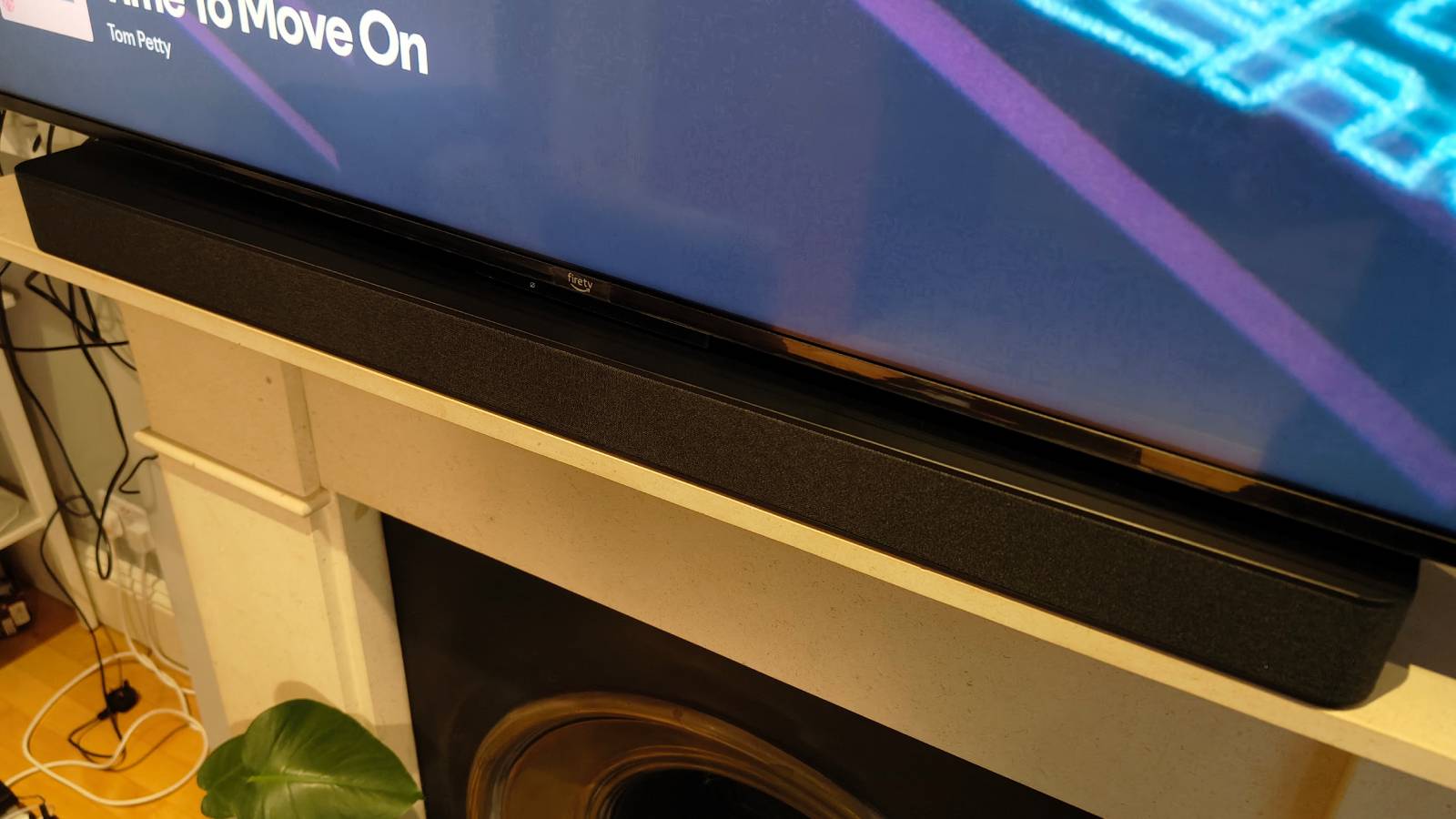
- Costs $249.99 / £249.99, not on sale in Australia
- Price is double that of non-Plus model
- Extra bundles with speakers in the US
Amazon unveiled the Fire TV Soundbar Plus in mid-November 2024, alongside its Omni Mini-LED and 4-series TVs.
You can buy the Amazon Fire TV Soundbar Plus for $249.99 / £249.99, so it’s certainly not a cheap device. In fact it costs double what the ‘standard’ Fire TV Soundbar launched for: that device hit the market at $119.99 / £119.99.
So this isn’t a cheap soundbar by any means (although there are plenty of four-figure options out there, for the audiophiles amongst you. However it’s worth pointing out that within weeks of unveiling the device, it put it on sale for Black Friday, and so if you wait you could see it discounted again. Check out the prices just below to see if that's the case.
You can also pay more if you’d like – a lot more. $374.99 gets you the bar alongside a subwoofer and $489.99 gets you the bar, a subwoofer and some speakers. This review is for the single-bar package, though, as I didn’t test those other speakers and they don’t seem to be on sale outside the US.
Amazon Fire TV Soundbar Plus set-up
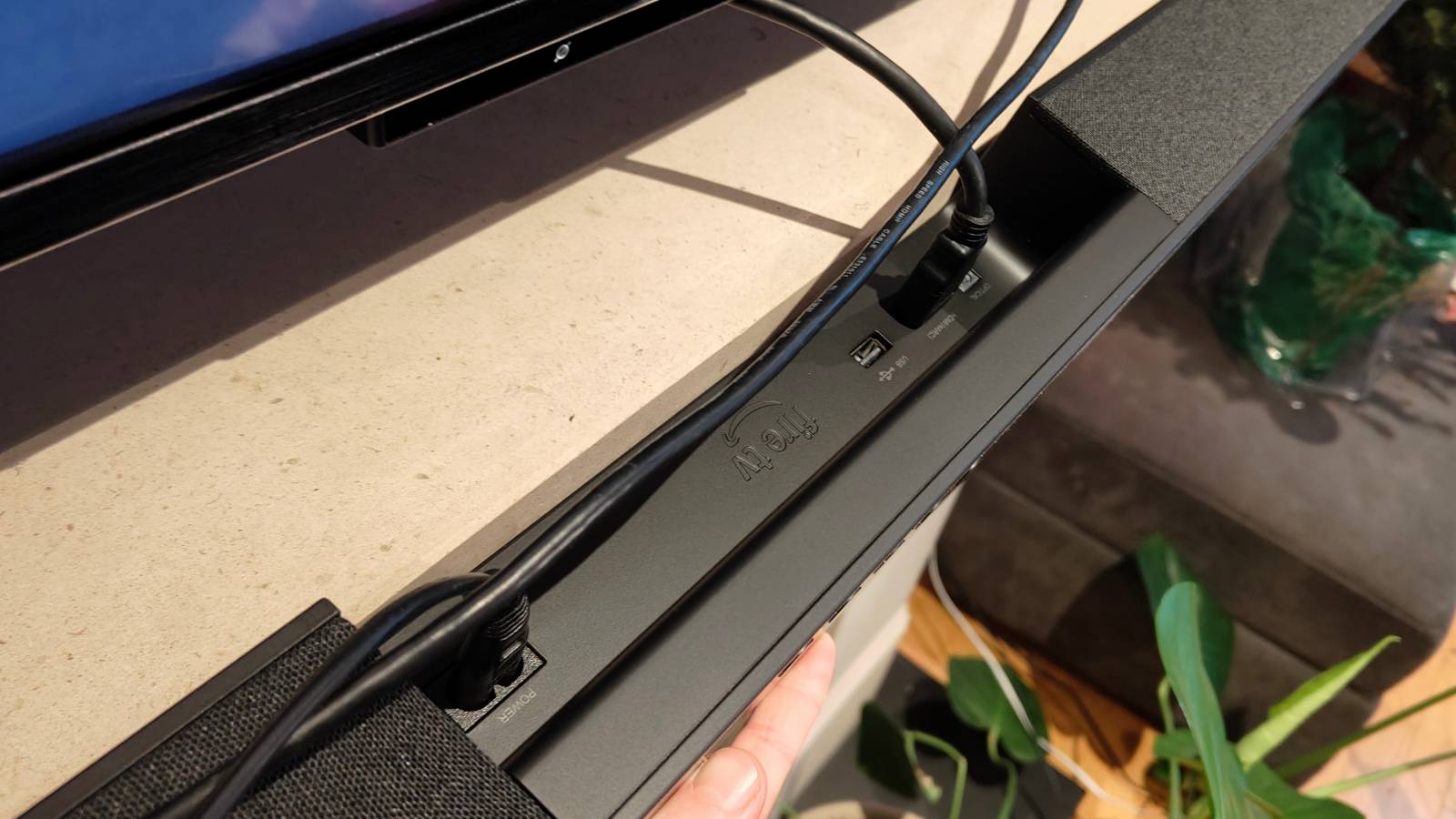
- Easier to set up alongside TV than streaming stick
- Takes up a lot of shelf space
- Needs separate Fire TV device
When I set up the original Fire TV Soundbar, I found it a little fiddly to set up – the process is fairly similar in the Amazon Fire TV Soundbar Plus, but since I was testing it alongside a new TV from the company it was a little easier.
What wasn’t easy, though, was finding a place in my home that could hold the device. The speaker is a bit shorter than its predecessor at 6.4cm high (not quite the 9cm of the original) and longer at 94cm long (over 60cm) but the biggest change is that it’s much thicker, with its 13.2cm width causing it to take up much more space than the original’s 6.5cm. It’s also over twice as heavy, weighing 4kg (the Soundbar was 1.8kg).
Because of its bulk, it’ll be a challenge for some people to find a place to store or position the Soundbar Plus near their TV — I just about managed to perch it on the shelf under my set, but it was such a tight fit that I couldn’t angle the TV down! Other people might have more trouble than I did – some wall mounts come in the box but people who rent their flat or don't have space on the wall can’t use these. Before buying the Plus I’d recommend grabbing a tape measure or ruler to check that it'll fit.
Another key thing to note is that you need to have access to Fire TV (Amazon’s smart TV operating system) to use the soundbar, as it doesn’t have built-in access. You’ll therefore need to buy an Amazon streaming stick or a TV set that runs on Fire TV to use it, a fact that many people online aren’t happy with.
With the TV, I found it easy to plug the soundbar into the HDMI-arc port of the set, though from my experience it’s a little harder to set up if you have a Fire TV stick. You can also set up with standard HDMI or Bluetooth.
Amazon Fire TV Soundbar Plus day-to-day use

- Lots of EQ preset modes
- Dialogue boost is incredibly handy
- You can adjust treble and bass
A soundbar is a very low-maintenance gadget, so you don’t “use” it like you use a TV and it sits in the background. However there are a few settings you can change to improve your listening experience.
If you’ve read my Fire TV Soundbar review you’ll know about its various toggles that change the equalization of your movie or show, and the amount of bass, and Amazon offers more improvements with the Plus.
Using the remote’s EQ button you can switch between modes like music, movie and night, with each offering a custom audio balance to improve your listening. There are new modes over the standard including Sports, which makes commentary easier to hear, and Night, which reduces bass and enhances dialogue so you can listen at lower volumes during the night.
Talking of dialogue, another remote feature lets you isolate and enhance the spoken word of your content, with different tiers increasing how prominent vocals are. This was incredibly useful in some shows and movies to ensure that mumbly dialogue or speeches that would otherwise be lost in the rumble of surrounding sound was still audible. If you watch lots of BBC dramas, this feature is all but mandatory!
The original soundbar had a similar toggle for bass and that’s back in the Plus as well as one for treble, and I found myself using both mostly for music streaming. The addition of treble, for higher-pitched frequencies, is a welcome addition.
Amazon Fire TV Soundbar Plus remote
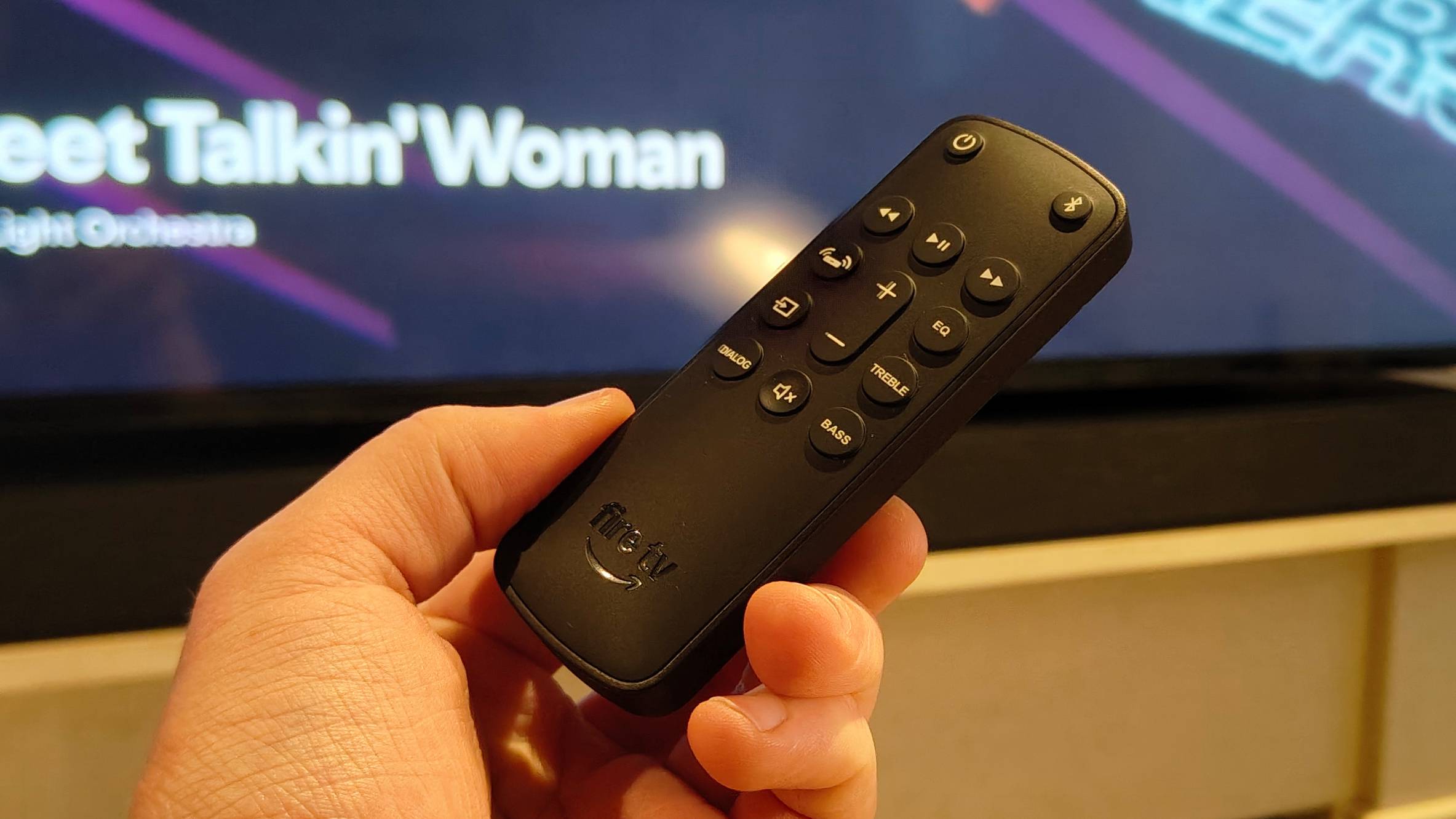
- Buttons for various aforementioned modes
- Takes two AAA batteries
- You can use your TV remote but you'd miss some features
While lots of Amazon devices share remotes, the Fire TV Soundbar Plus has its own one, which is similar to the previous soundbar remote but with extra buttons for some of the new features.
As you can see in the photo the buttons for dialogue, bass, treble and EQ give you loads of ways to customize your listening, and they join the expected buttons like play/pause, volume, mute and so on.
You can eschew the remote pretty easily by using the Fire TV Soundbar Plus alongside another Fire device like a streaming stick or TV, as it’ll automatically turn on and change volume based on what you select on that remote, and that’s what I did for most of the testing. However I quickly found a drawback – other Amazon remotes don’t have options for settings like bass, dialogue or EQ, so you can’t change these with your TV’s remote.
There aren’t actually buttons for these on the soundbar either, so I found myself keeping the remote handy in case I needed to improve the dialogue or change the EQ.
Amazon Fire TV Soundbar Plus video and audio quality

- Bass is dominant but treble and mid aren't lost
- Most features are handy, one lags
- Max volume is very high
Amazon lists the Fire TV Soundbar Plus as having three full-range speakers, three tweeters and two woofers, offering 3.1 channel audio for movies, TV and music.
An upgrade over its sibling is that the speaker has a built-in subwoofer, offering improved bass output, and you can tell. The bass is pronounced and powerful — it makes movies sound like theatrical experiences when you’re at home. By default it did make dialogue a little harder to hear, but the dialogue EQ mode fixed that.
Should you rely on extra modes over a balanced speaker? I don’t know, but the end result is the same.
I did find the balance better than in the Fire TV Soundbar (non-plus) with increased number of speakers letting Amazon tune its array with greater precision. This was best noticed in music which didn’t rely as heavily on bass.
Three features that provide a marked upgrade over the standard TV speakers are Dolby Atmos, DTS:X and DTS TruVolume. The first two of these work similarly in that they create a surround-sound effect, panning audio to the left and right as well as up and down to imitate how the same is done in theater speakers.
This is really noticeable, especially in a vertical sense — I enjoyed it most hearing footsteps run down stairs to the ground floor of a building, or hearing the whistle of a kettle as the steam billowed into the air.
DTS TruVolume is a feature which balances the audio volume of what you watch, so that it’s consistent — if you’ve ever found yourself hovering your hand over the volume rocker of a remote to lower the volume when commercials start, or to increase it during a dialogue scene, you’ll know why this is important.
Unfortunately I still had to do this, but definitely to a lesser degree than I’m used to, so it’s doing something. Just not enough.
As with its predecessor, the Fire TV Soundbar Plus has a high maximum volume, and I didn’t find myself listening above 50% volume during testing. That was good enough for my home at least, but you’d need a vertitable mansion to find this soundbar too quiet.
Is the Amazon Fire TV Soundbar Plus worth buying?
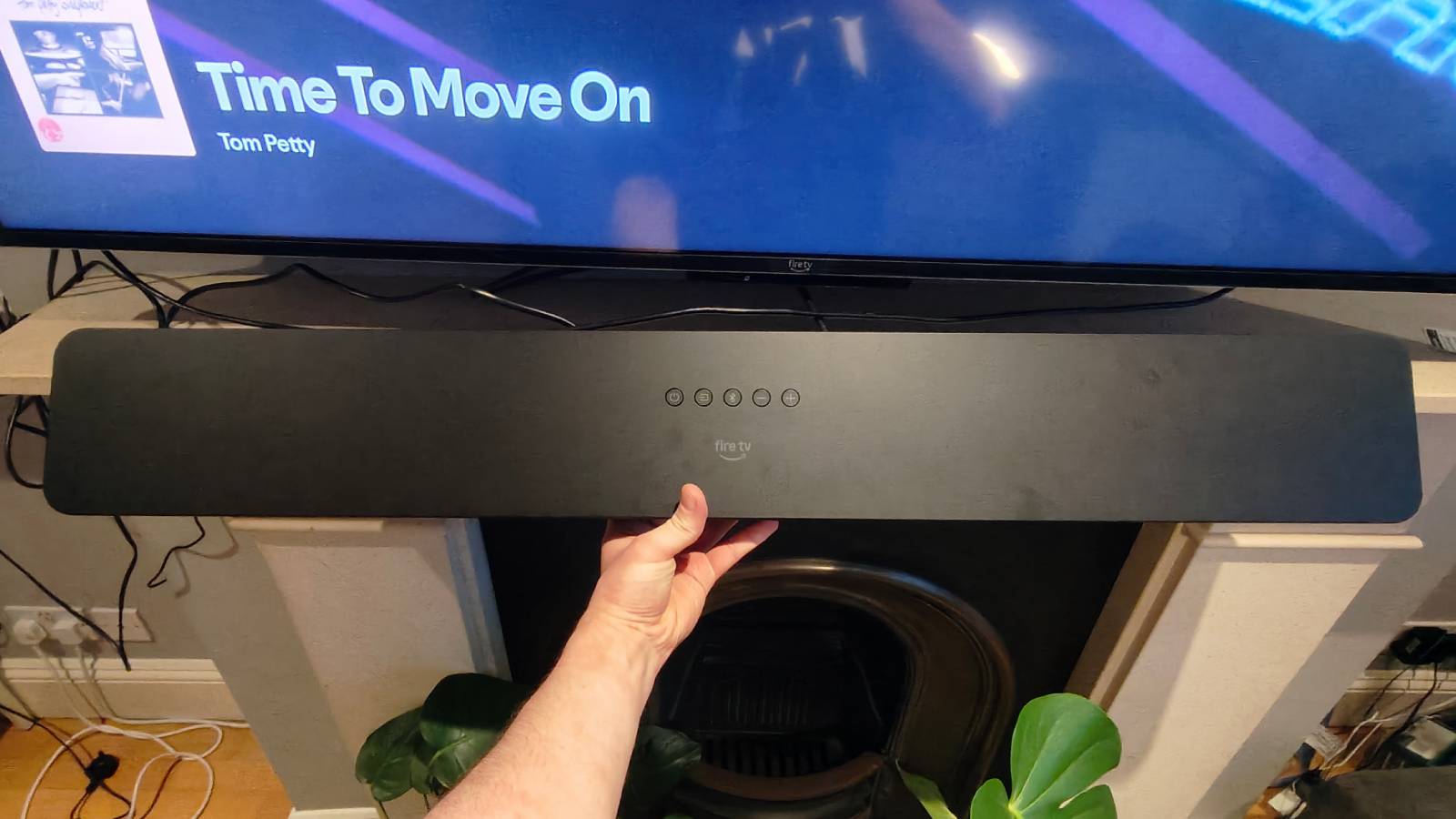
I enjoyed testing the Amazon Fire TV Soundbar Plus, but if you’d consider yourself an average TV viewer (ie, not an audiophile or someone trying to create a fancy home theater set-up), then it’s hard to recommend it.
This is largely down to the price. It costs twice as much as its sibling but doesn’t sound twice as impressive, and I see the standard Amazon Fire TV Soundbar being just about good enough for the average buyer.
Plus, the size will be prohibitive for some buyers.
That said, if you want to supercharge your movie night and find the Soundbar Plus on offer, then it’s a must-buy. It’s also still relatively competitive in the pricing department, given how expensive some other options are.
I'd be remiss not to once again mention its various EQ modes, particularly the dialogue enhancer, which I found very useful to combat hard-to-hear conversations.
Competition
- The most obvious point of comparison is the Amazon Fire TV Soundbar which is half the price, quite a bit smaller and works in a similar way. You'll miss some features and it's not got the audio chops of the Plus.
- The Roku Streambar Pro is the equivalent from Amazon's big rival. It's cheaper than the Soundbar Plus and comes with its streaming stick built in, though people report its bass is weaker.
- You can buy the Bose TV Speaker for only a touch less than the Soundbar Plus and it comes from a respected name in the audio department.
- One of the biggest names in audio has two competitors for people who don't mind a higher bill. The Sonos Ray soundbar isn't that much more expensive than the Soundbar Plus and the same company also has the Sonos Beam and Sonos Arc if you have the funds for them.
More on Amazon Fire TV devices
- How to turn off an Amazon Fire TV Stick
- How to get Netflix on an Amazon Fire TV
- Amazon Fire TV Stick vs Fire TV Stick 4K comparison
- Amazon Fire TV Stick vs Fire TV Cube comparison
How I tested the Amazon Fire TV Soundbar Plus
I've mentioned in dribs and drabs how I tested the Amazon Fire TV Soundbar Plus through the review, but here it is in one section for clarity.
I used the soundbar alongside the new Amazon Omni Mini-LED TV, which was released at the same time, and it got heavy use for streaming movies, TV shows and music on the set, as well as for playing video games and watching DVDs via a PlayStation 4 (which was plugged into the TV).
I tested the soundbar over the course of three weeks and it got use on most days. I tested the original Fire TV Soundbar for roughly this time too, and that was a recent review so I could easily compare them.
I've been testing tech gadgets for nearly 6 years now for various websites, so have experience with many different type of product, including audio ones. I have tested multiple streaming devices for What to Watch and regularly contribute headphone, earbud and speaker reviews for our sister website TechRadar.

Tom is the streaming and ecommerce editor at What to Watch, covering streaming services in the US and UK.
As the site's streaming expert he covers new additions, hidden gems, round-ups and big news for the biggest VOD platforms like Netflix, Apple TV Plus, Disney Plus, Prime Video and Tubi. He also handles the site's articles on how to watch various movies, TV shows, sports, live events and classic box sets, and coverage on hardware like TVs, soundbars and streaming sticks.
You can commonly find him at film festivals, seeing classic movies shown on the big screen, or going to Q&As from his favorite film-makers and stars.
